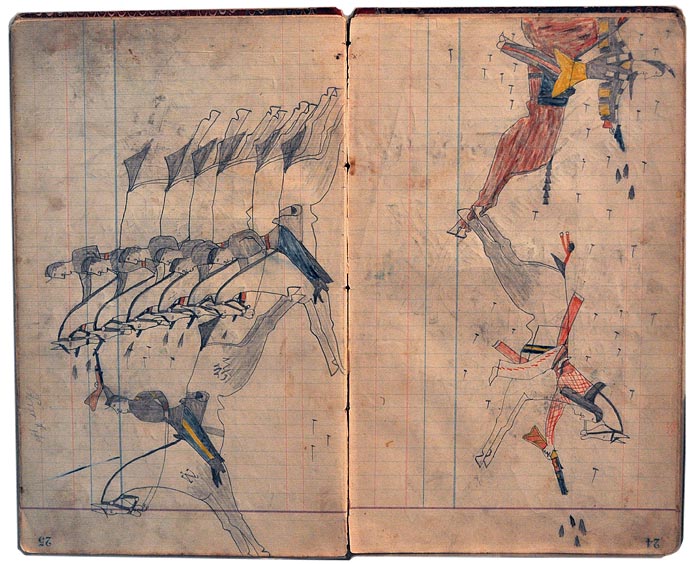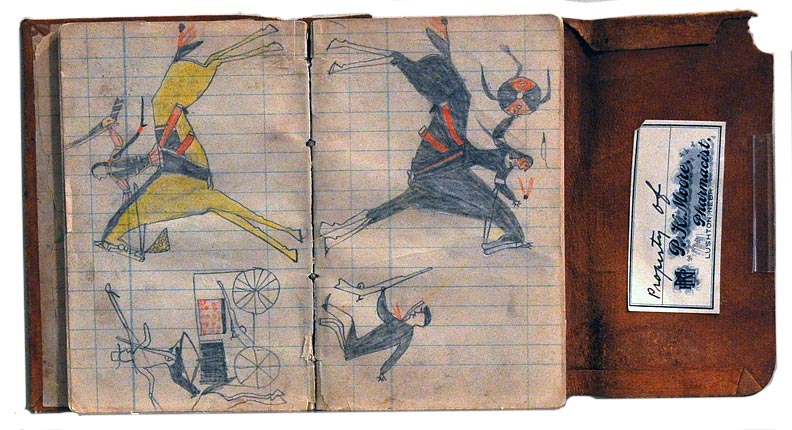Hide Paintings
Native American tribes of the Great Plains have long recorded heroic deeds and significant events by painting on hide or canvas. For the Lakota, pictographic calendars of a community’s history, called winter counts, were important mnemonic devices, helping community historians remember the sequence of events that were the tribe’s history. While not all paintings on hide or canvas are arranged sequentially to serve as calendars or winter counts, the events that they portray are usually experiences that the tribe or band wished to remember.

Sam Kills Two, also known as Beads, works on his winter count. The death of Turning Bear, killed by a locomotive in 1910, appears in the second row just above Kills Two’s left foot.
Photographer, John Anderson. (RG2069.PH2-1)
The picture is the rope that ties memory solidly to the stake of truth was the saying of the old band historians.
~Mari Sandoz in her Introduction to A Pictographic History of the Oglala Sioux.

Few painted hide or fabric objects are winter counts, but rather non- chronological representations of the past. This Crow man’s wearing robe dates to about 1865 and was collected by Charles H. Dietrich (later to be a Nebraska governor) in the Black Hills in 1876. As is true for many, if not most, of this type of record, the story that goes with these drawings is lost.
Ledger Art
Ledger Art, painting or drawing images on the blank or nearly blank pages of a ledger or other types of commercially produced volumes, is a continuation of the tradition of recording significant events in visual representations. As new materials, such as paper, ink, pencils, and colored pencils became available, the images created by American Indian artists became more detailed. But they were still designed to serve primarily as catalysts for the stories that provided a complete accounting of an event.

This book belonged to Major William Henry Keeling of Falls City, Nebraska, who served in the army in Montana in the 1860s. This ledger book was probably obtained at Camp Cooke, Montana, in 1866-67. The initial inventory record for this item reads “Book of Indian Drawings, history of the Nez Perces Indians.”
This ledger book includes many drawings of battles, both American Indians fighting soldiers and tribes fighting other tribes. The book also shows buffalo hunting, traditional courting activities, and a railroad train.

This diary containing American Indian drawings came to the Nebraska State Historical Society in 1928 as a gift from P.K. Moore of Lushton, Nebraska. The only information that he could provide was that his father purchased it from “a derelict returning from the Black Hills in 1877.” He was told that it was taken from the body of an Indian who had been killed by soldiers the previous year.
Moore speculated that the book might have been lost by its first owner, likely a soldier from a cavalry company that left Fort Sill, Indian Territory, shortly after the Battle of the Little Big Horn heading to the Black Hills. Or perhaps the soldier had been killed in fighting and the volume taken by his enemy. Either way, it came into the possession of the Indian artist who filled its pages with images of horses and of battles with soldiers.




